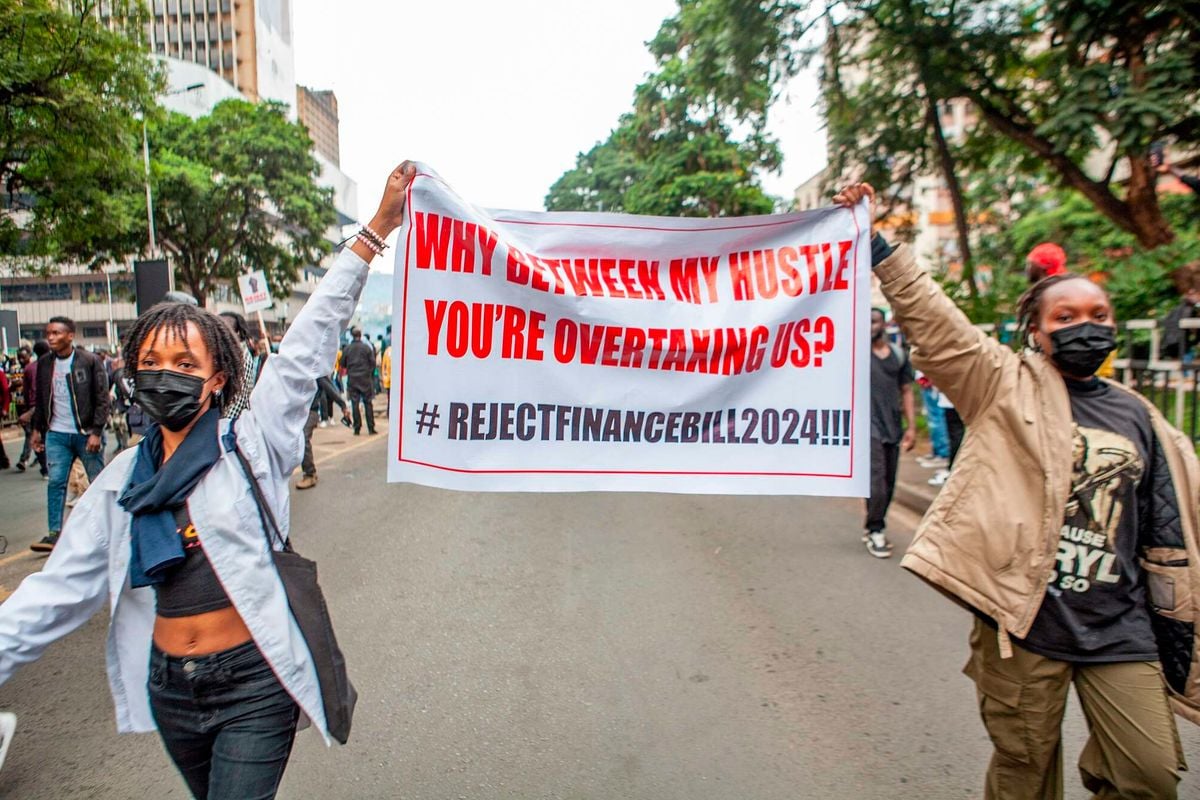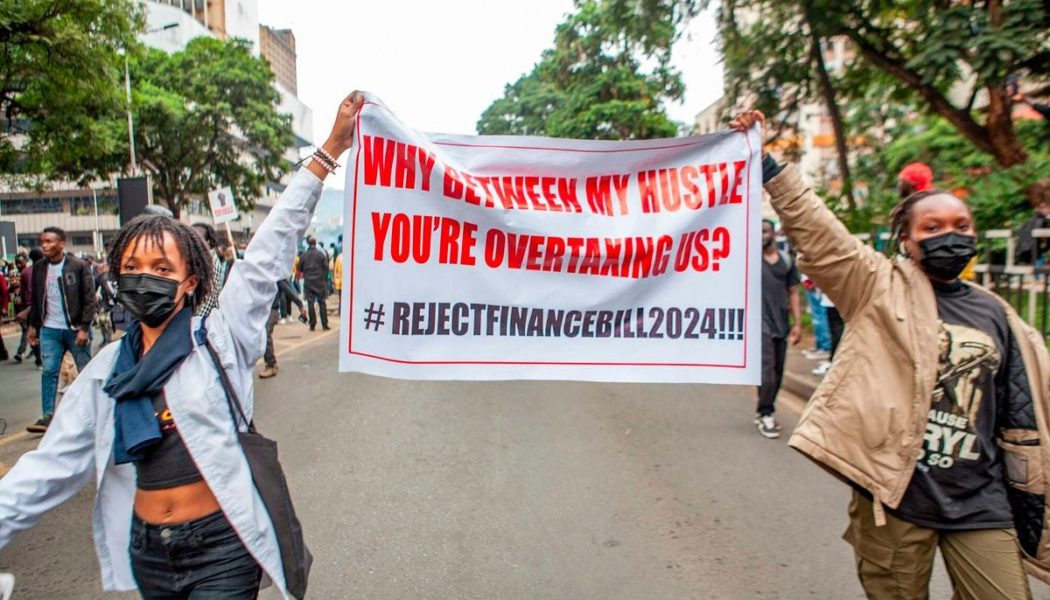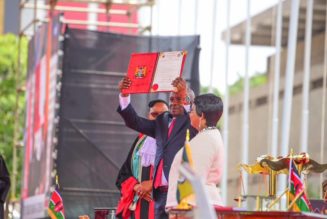
The Treasury has slashed its tax target for the next financial year by Sh334 billion and cut spending in changes that point to government hesitance to raise taxes amid public anger.
The budget review and outlook papers show the exchequer expects to raise Sh2.96 trillion in the year starting next July from the initial target of Sh3.294 trillion set before deadly protests forced the government to withdraw Finance Bill 2024—which planned tax increases.
The reduced tax collection target has triggered a cut in spending by Sh396 billion for the new year to Sh4.157 trillion.
The outlook papers provide a sneak preview of the Finance Bill 2025, which comes in a period when the State remains fretful over a public outcry and threat of protests should it push for new taxes.
President William Ruto discarded tax hikes worth more than Sh346 billion in June after the protests that killed more than 50 people.
The move left the heavily indebted government with a bigger budget deficit for this financial year, mounting pending bills, and a delay in funding from the International Monetary Fund (IMF)—whose staff are visiting Kenya on a fact-finding trip.
“As we commence on the preparation of the 2025/26 and medium-term budget, I am aware of the challenges we are currently facing as a country. This includes less than ideal revenue performance, escalation in public debt and debt service, expenditure carryovers and the accumulation of pending bills as well as increased requirement for funding priority interventions,” said Treasury Cabinet Secretary John Mbadi.
Of the Sh334 billion cut in revenue collections, income tax has recorded the largest fall of Sh172.3 billion to Sh1.327 trillion.
Projections of value added tax (VAT) are down Sh100.1 billion to Sh826.1 billion while import duty has been revised downwards by Sh33 billion to Sh196.7 billion.
Aggressive clampdown
The State is betting on an aggressive clampdown of tax cheats and widening of the tax net to tap the growing informal sector to cut reliance on hikes targeting the formal sector to grow revenue collections.
This is informed by the need to calm the nerves of a population that has shown desire to protest against tax increases.
Mr Mbadi initially said he would revive some tax hikes in the abandoned Finance Bill.
He later signalled that the government would consider tax cuts in the medium term, including reducing the VAT on goods and services to 14 percent from 16 percent, and slashing the corporate income tax from 30 percent to 25 percent.
Kenya requires billions of shillings to keep servicing its debt, which stands at above the optimum level recommended by the World Bank and the IMF, after years of borrowing driven by infrastructure construction.
The IMF fact-finding trip is part of efforts to craft a way forward in the aftermath of deadly protests that prompted the withdrawal of planned tax hikes.
Kenya agreed a four-year loan with the IMF in 2021, and signed up for additional lending to support climate action measures in May 2023, taking its total IMF loan access to $3.6 billion (Sh464 billion).
The IMF requires regular reviews of reforms – in Kenya’s case every six months – before it releases tranches of funding.
Kenya reached a staff level agreement with the IMF in June on the seventh review of its programme, but the protests and ensuing withdrawal of the Finance Bill put a sign-off by the fund’s executive board, and subsequent payout, on hold.
In the new fiscal year, spending on development projects like building roads, bridges and power plants is expected to drop by Sh405.5 billion to Sh663.2 billion while recurrent spending on items like civil servants salaries will rise by Sh30 billion to Sh3.056 trillion.
The cuts to development will see the government spending less on projects such as infrastructure and the provision of social services even as the exchequer highlights the use of public-private partnerships (PPPs) as an offset.
Project spending is key in upgrading infrastructure that is attractive to foreign investors and helps put money in the pockets of workers and supplies through salaries and buying of raw materials like cement, steel products and timber—boosting the cash flow of firms dealing in the products.
This has the effect of increasing jobs in an economy with a growing youth unemployment crisis.
“To reduce development expenditure, government will scale up the use of public-private partnerships framework for commercially viable projects while considering the contingent liabilities that come under this framework and review the portfolio of projects including those externally funded with a view to restructuring and re-aligning them with the bottom-up economic transformation agenda (BETA),” the Treasury said.
Kenya is turning to PPPs to finance the construction of highways and other infrastructure after public debt ballooned.
Public debt went up following five years of increased borrowing to fund the construction of roads, railways and power plants.
Under PPP deals, private financiers build roads and recoup their investments through avenues such as tolling.
This is the arrangement that has attracted India’s Adani Group to build high-voltage power lines and manage Jomo Kenyatta International Airport (JKIA).
Key spending areas
Key spending areas facing cuts in the new fiscal plan include free primary and secondary education and the capitation of junior secondary schools.
The allocation for free secondary education in the financial year beginning on July 1, 2025 is set to fall from Sh110.1 billion to Sh73.1 billion while that of free primary education falls to Sh12.4 billion from Sh23.4 billion.
County governments are also set to feel the heat of the spending rationalisation, with transfers set to dip to Sh432.7 billion from an estimate of Sh452.9 billion previously.
The equitable share of revenues to counties from the national government in the 2025/26 financial year will be lower than the current Sh410.8 billion (FY 24/25) at Sh400.1 billion.









